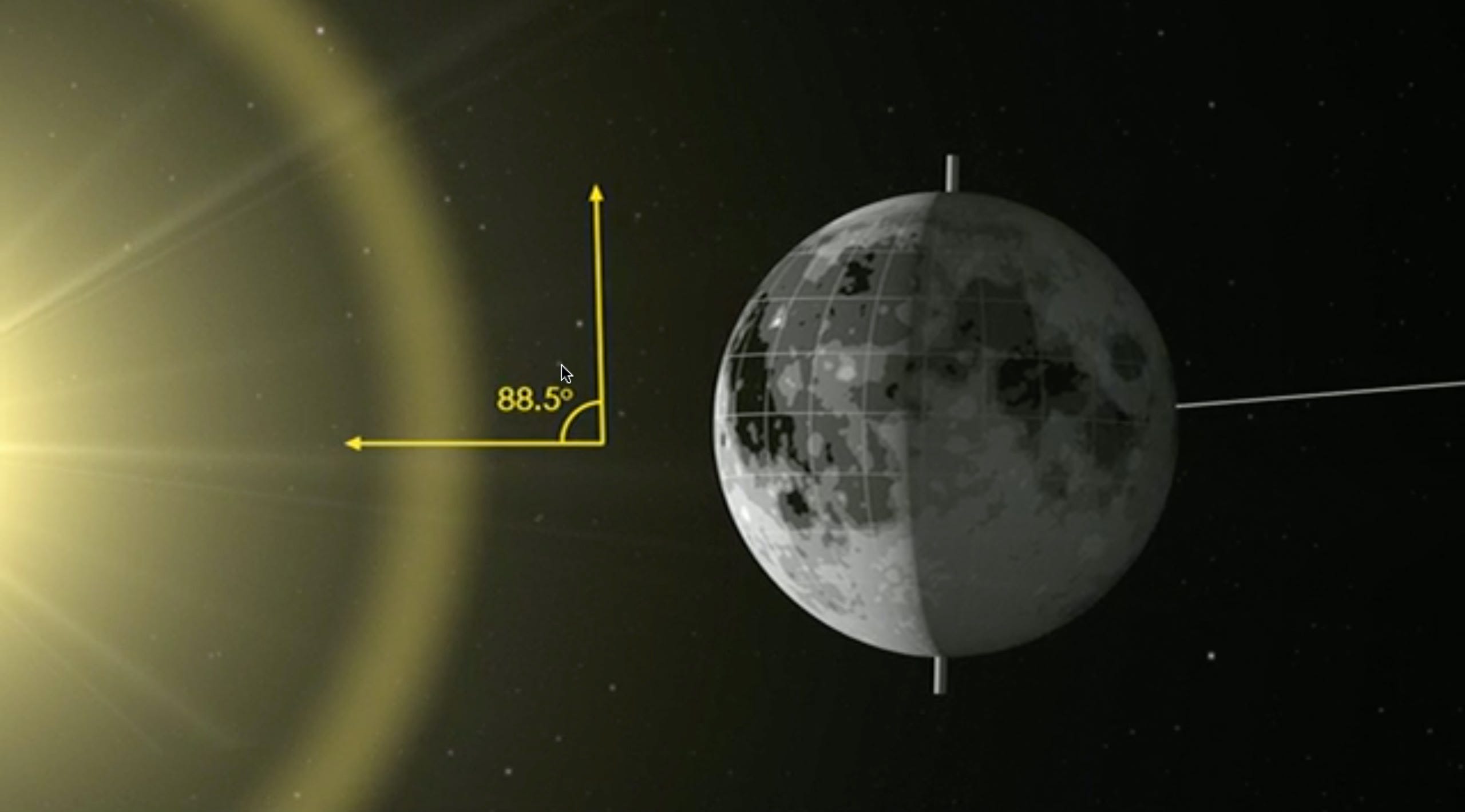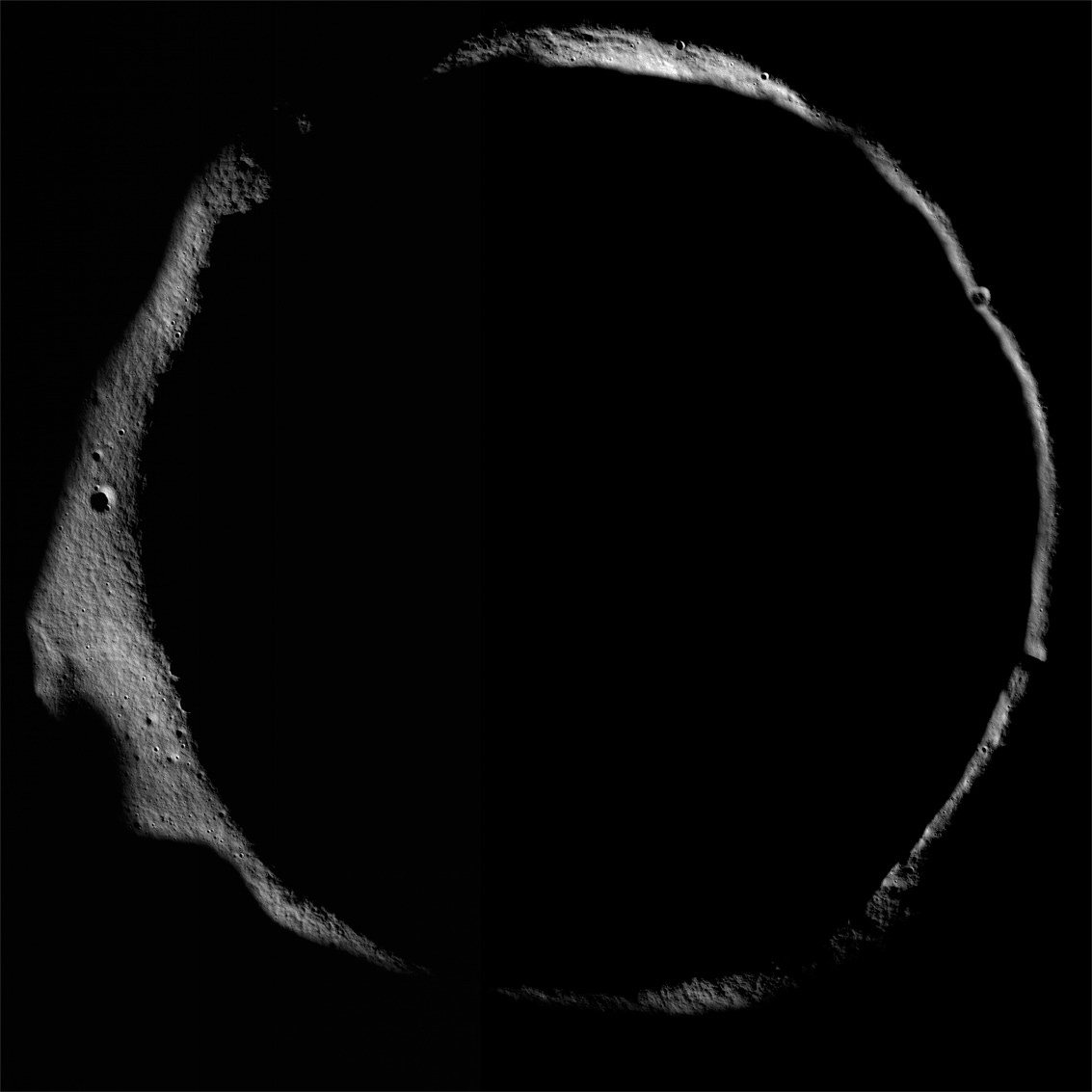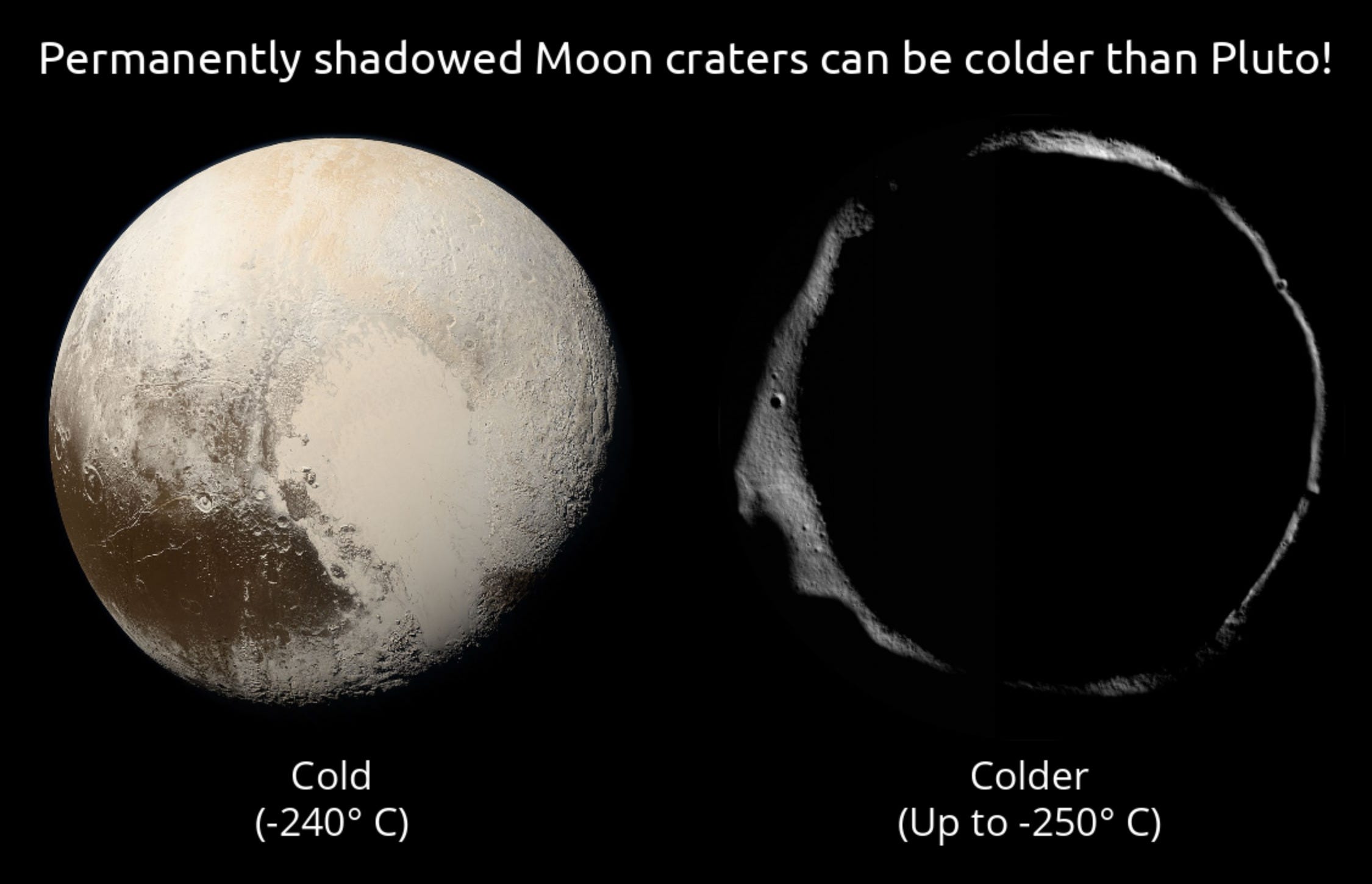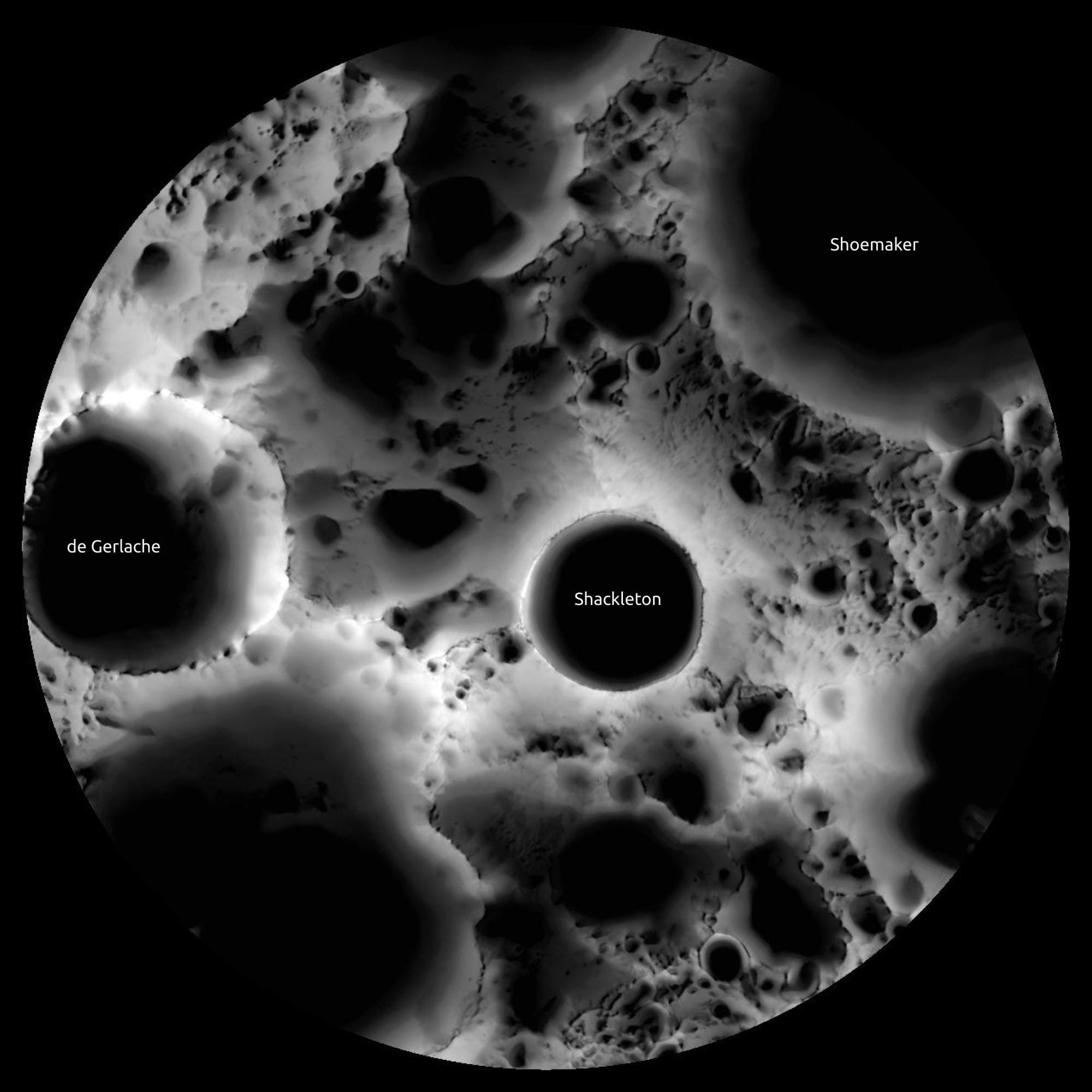What are permanently shadowed regions on the Moon?
And why explore them.
NASA and ISRO made headlines when they discovered water on the Moon in 2009, the efforts of which span at least two decades. The existence of lunar water seems strange though, considering our cosmic neighbor has no atmosphere and its surface is exposed to the vacuum of space. Daytime temperatures reach 120 degrees Celsius, evaporating any surface water and losing it to space. Space missions have instead found that most of the lunar water exists in special cold regions deprived of sunlight.
Earth is tilted 23 degrees away from the plane in which planets go around the Sun. This tilt changes the amount of sunlight our planet’s northern and southern hemispheres receive each year, creating our seasons. It also plunges the north and south poles into periods of constant darkness and constant sunlight.

Our Moon, however, has less of a tilt. At its poles, the Sun hovers close to the horizon. Large craters with terraced rims block sunlight from ever reaching inside. These areas deprived of sunlight are aptly called permanently shadowed regions, or PSRs. The Moon has hundreds of PSRs on its poles.

Colder than Pluto
Lying six billion kilometers from the Sun, Pluto receives 1500 times less heat on average than Earth or the Moon do, resulting in surface temperatures as low as -240° Celsius. And yet permanently shadowed regions on the lunar poles can get even colder, going as low as -250° Celsius. That’s a mere 23 degrees above the coldest possible temperature in the Universe.

The Moon doesn’t have an atmosphere to warm up these regions either. Such exceptionally cold environments make PSRs excellent traps not just for water ice but also other volatiles like carbon dioxide, methane, ammonia and more. PSRs are known to exist on other low gravity, airless worlds too, like Mercury and Ceres.
Why explore PSRs?
The accumulation of water ice in PSRs over a few billion years of the Moon’s existence has been substantial. Based on remote observations by radar instruments onboard ISRO’s Chandrayaan 1 orbiter and NASA’s Lunar Reconnaissance Orbiter (LRO), scientists estimate the lunar poles to host at least 600 billion kilograms of water ice, enough to fill at least 240,000 Olympic-sized swimming pools.

The high volume of water ice on the Moon has attracted the attention of space agencies and private companies around the world. They envision mining the water ice to produce air, drinking water, and propellant, fueling the needs of lunar habitats and even entire lunar industries in the future.
For scientists, the water ice and other chemicals in the PSRs offer a pristine record of cometary and asteroid bombardment from the solar system’s early days. By studying the water and its samples brought to Earth, we can learn more about the origin of the Earth and Moon.
PSRs add to a substantial list of reasons to explore the Moon and are central to exploration plans of space agencies worldwide. Learn how we plan to explore these challenging yet rewarding regions in my Ultimate water on the Moon guide.
Resource list
- Explore PSRs in a Google-maps like interface with LROC Quickmap
- Atlas of PSRs by NASA LRO
- Slope, elevation, temperatures, solar illumination and communication maps of the lunar south pole by LPI
- The Moon’s south pole on NASA’s Scientific Visualization Studio
